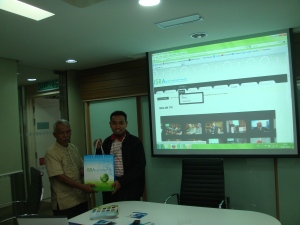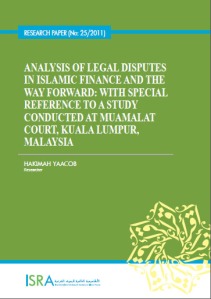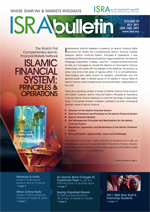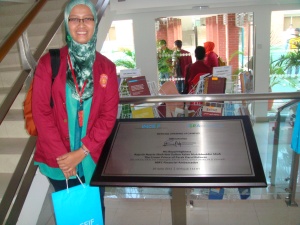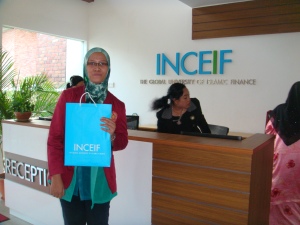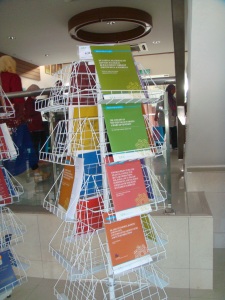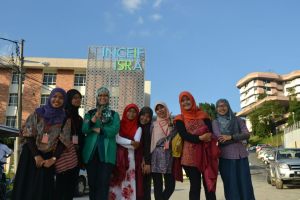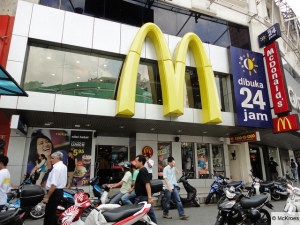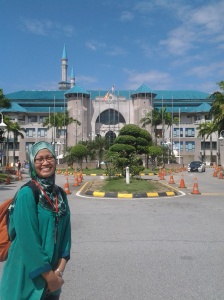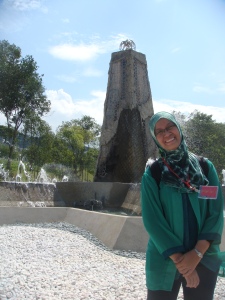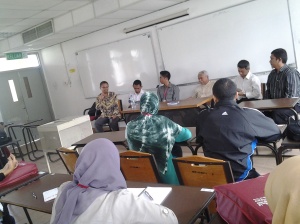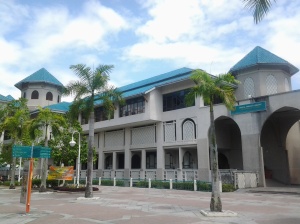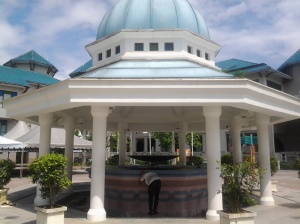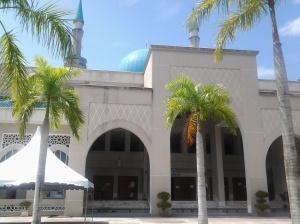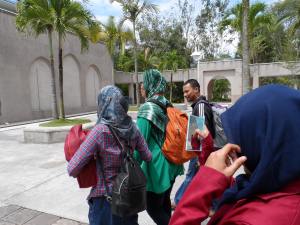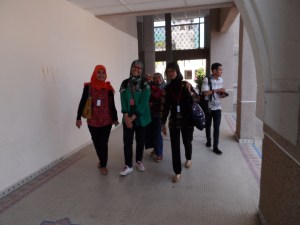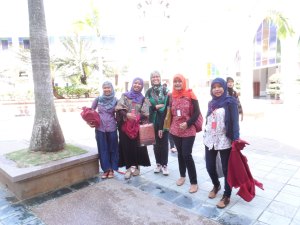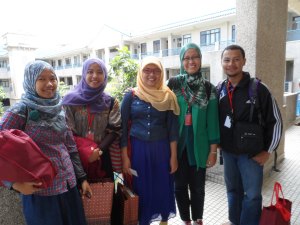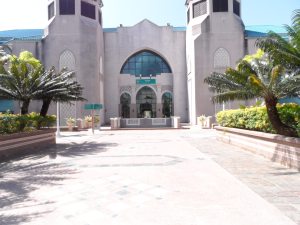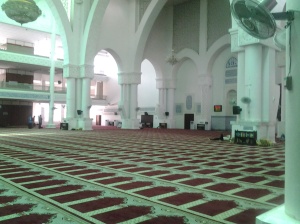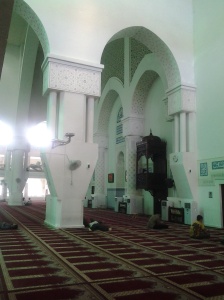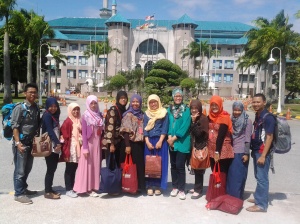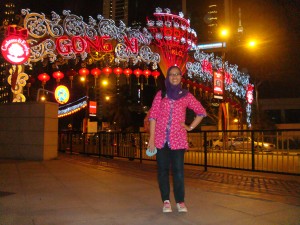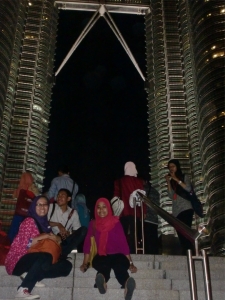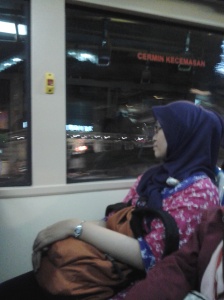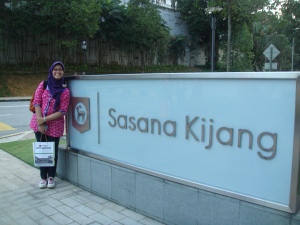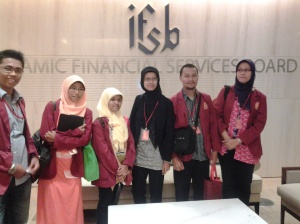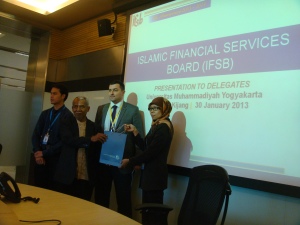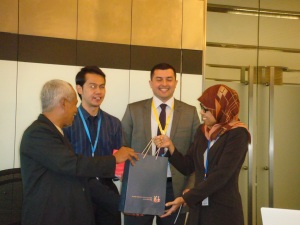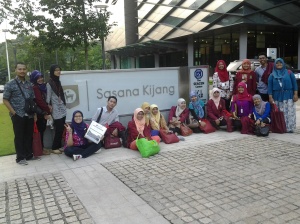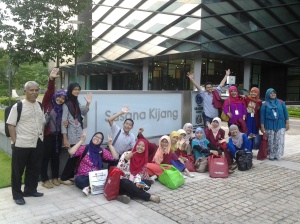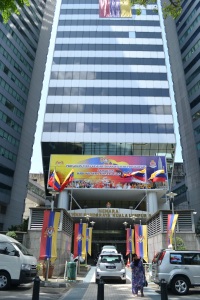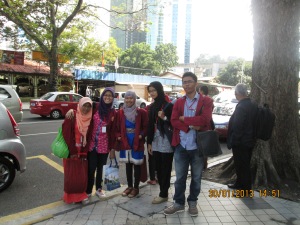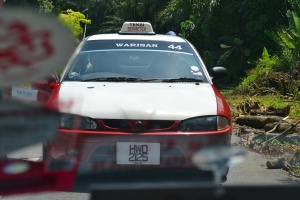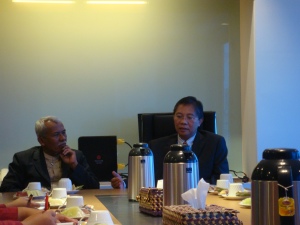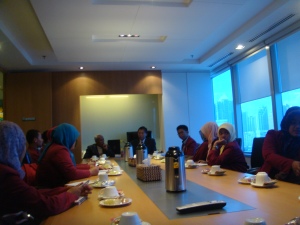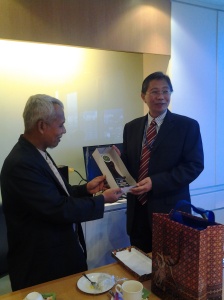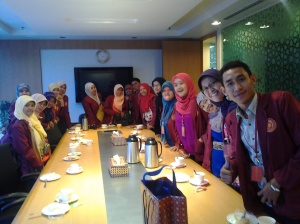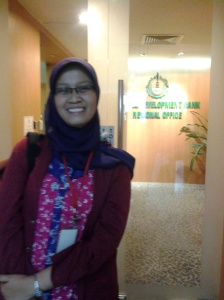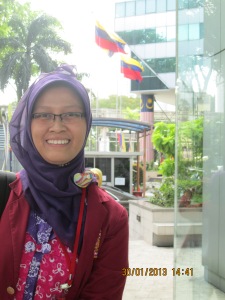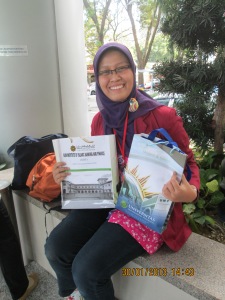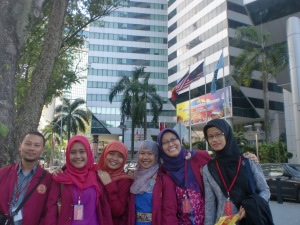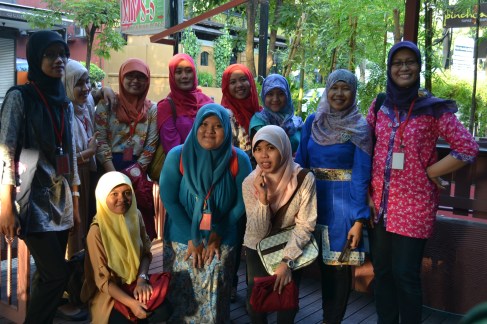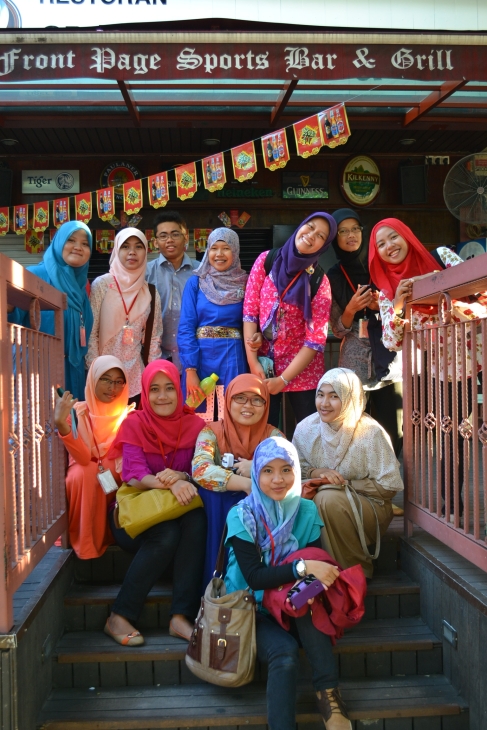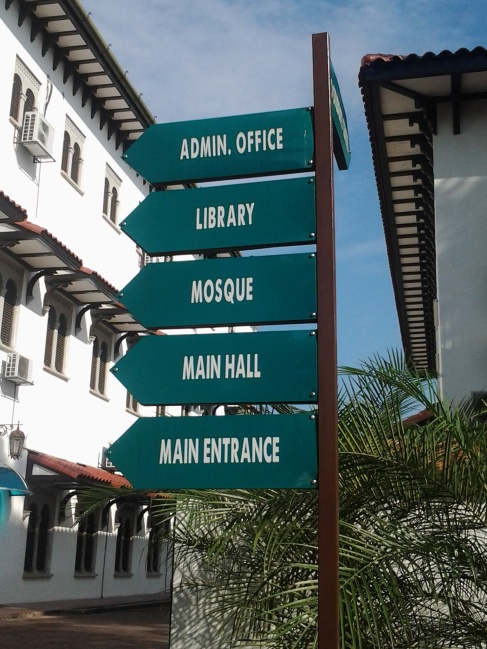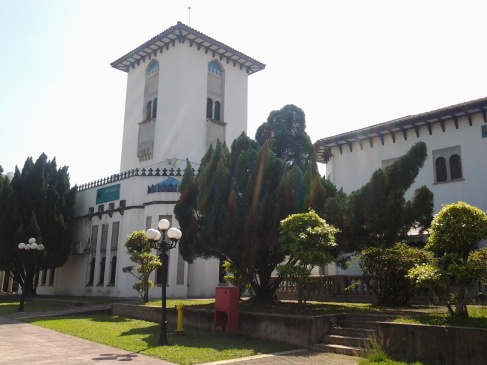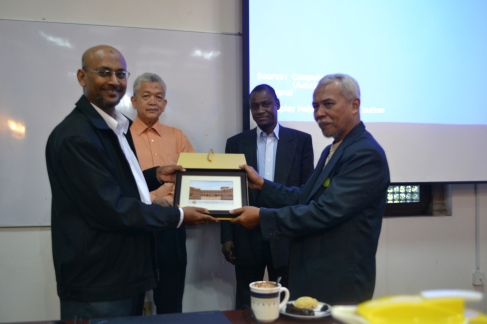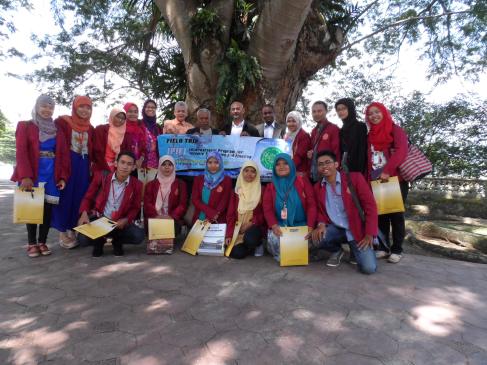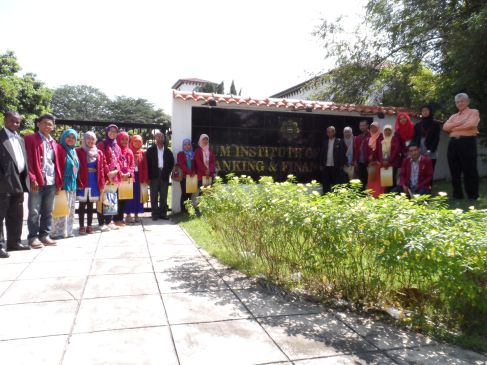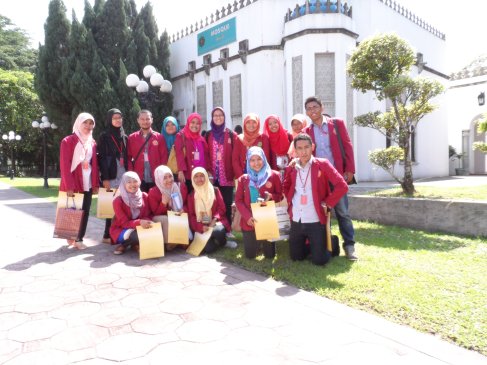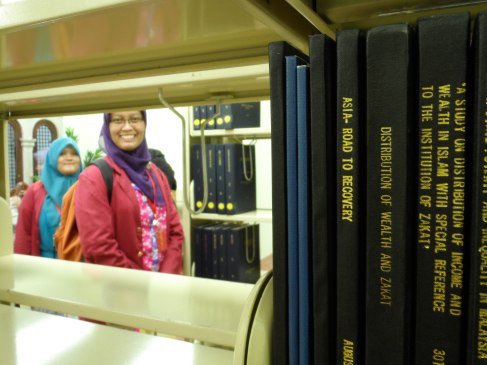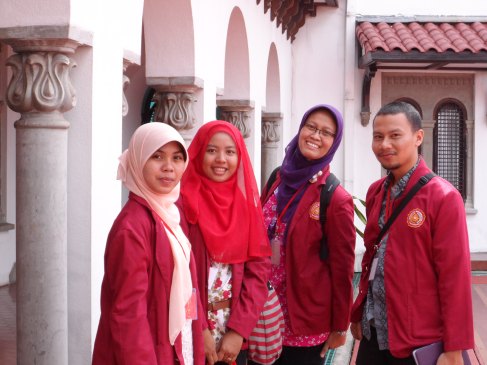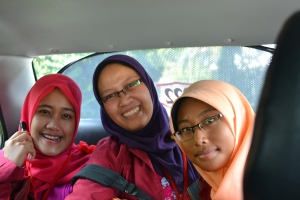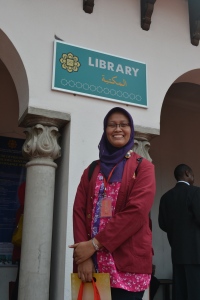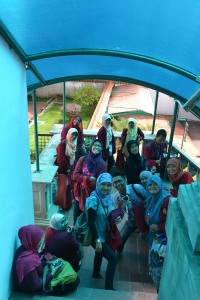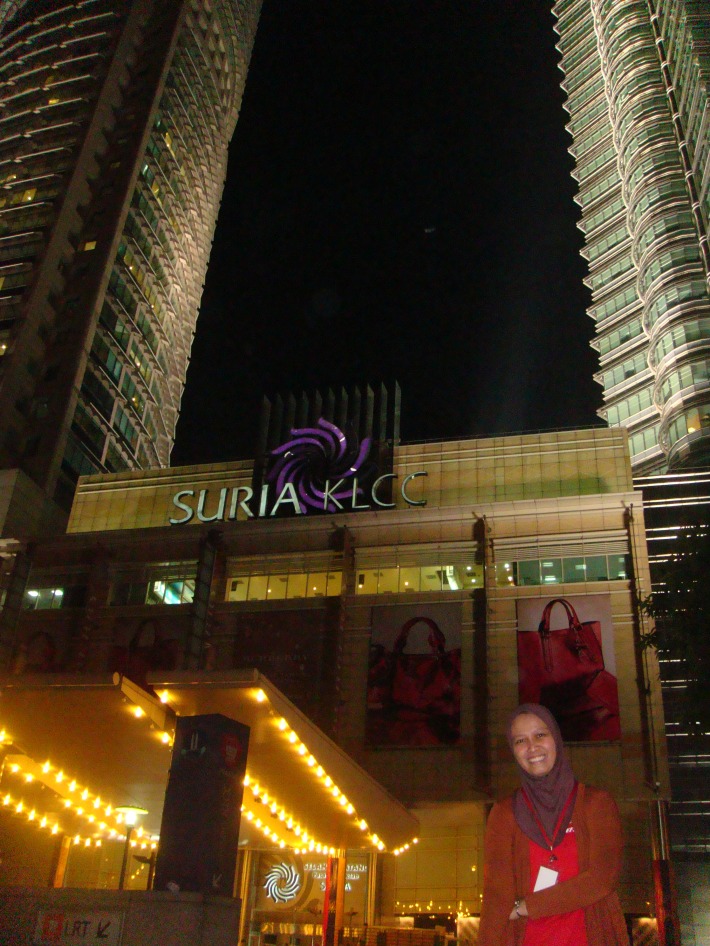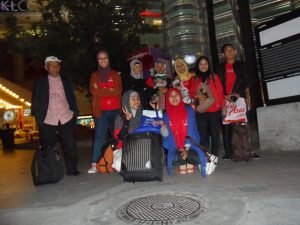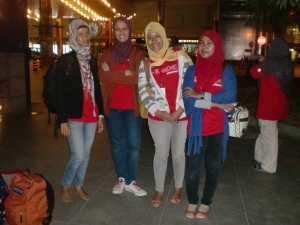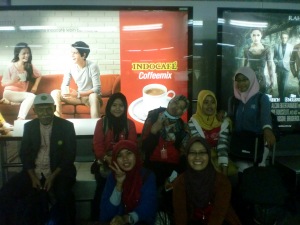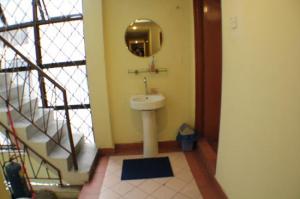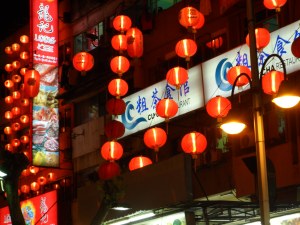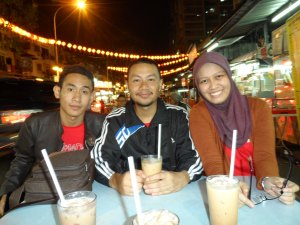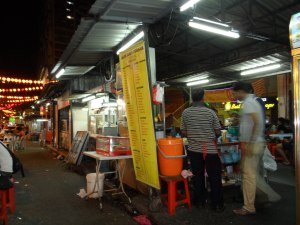THE TIME VALUE OF MONEY IN ISLAMIC PERSPECTIVE
Faiza Husnayeni Nahar N.I.M: 20090430012
Khairunnisa N.I.M: 20090430011
Ary Sugma Pratama N.I.M: 20090430015
ABSTRACT
Islam has a lot of sale and purchase contract that not only direct contract such as transaction between buyer and seller at that time but there is also a sale and purchase namely Bai Muajal which is deferred payment. Similarly, the debt, when people owe and pay in the future, it will be a return with an additional amount of money borrowed that has been defined as compensation time that was sacrificed by the people who loan his money. Those contracts involve fixed and pre-determined element as compensation for time. The existence of prior returns to be paid even exceed the total borrowing due to the compensation time is an element of riba. The existence of usury or interest in the payment of compensation due to time or called it the time value of money is still in discussions for the people who expert in Islamic economy in the world. Within Islam itself, time value of money is still a discussion that was interesting because the characters see the concept of time value of money from different angles and even said that the time value of money is not always exist of riba. So by describing the opinion of the economists of Islam in this paper is Sayful Azhar Rozly and Monzer Khaff can make our knowledge increase by knowing the concept of time value of money as a whole.
Keyword: time value of money, Monzer Khaff, Azhar Rosly, hadits.
INTRODUCTION
Bay-muajal is the contract which used fixed and pre-determined element as compensation for time. [i] This happens because we do not know surely is it the future value of money greater than value of money at this time or the value of money in the future is less than value of money at this time?.So by the existence, the clear contract and additional agreement is the aims for the compensation of time. If there is a promise to you to give some money then there are two options that you select today’s money of 2.000.000 IDR or you choose money of 5.000.000 IDR but you will receive it two years later? Most people will choose to get money today because (1) Real value of 5.000.000, – IDR in two years later is not necessarily greater in value than the current money of 2 million IDR. (2) If you have needs that must be met at this time then take the first option means that the money is ready for use in fulfill the needs. (3)The real effect from the first choice, because if receive the money today. We don`t know for next 2 years later are we still alive or those that promise is broken a promise.
The uncertainty that occur in the future to make the concept of time value of money is created. The existence of uncertainty makes the future create the uncertainty converted into a certainty. In the conventional economists called compensation as the discount rate. In the discount rate, the probability which should there a no return and negative return interchangeable with something that is definitely namely a premium for uncertainty (positive return). This condition makes Adiwarman Karim said that Islamic economists reject this concept because the condition of al ghunmu bi la ghurmi (going return without responsible for any risk) and al-kharaj bi la dhaman (gaining income without responsible for any expenses). The concept of the discount rate is absence of a relationship at all between risk and return. Thus the science of finance has always been known by the risk-return relationship. If it is invested with a high risk in the presence of a high return as compensation for higher risk, similarly, if you invest with low risk, then the investor should be satisfied with low returns as well. Do not expect high returns without high risk, and vice versa.
Concept of time value of money is exist from interest rate because relate to the phenomenon of interest with the formulation known as the “decline in value of goods in future compared with the value of goods at a time when present”. In here, the interest as the difference value obtained from the goods at the present time to exchange of goods in the future. So the interest became the basis of the concept of time value of money. Advantages which are obvious in the presence of interest in the time value of money be the reason why the price of credit sales commonly more expensive than the cash price. people who lend money to someone, for instance 1 million and money will be returned a year later by the same amount it make the lender will be lost because the lender does not receive any benefits as he has sacrificed his money for 1 year. So it make the practice of savings and loans or the sale could not be separated using the calculations of risk and time factors in the form interest. For Muslims, especially in Indonesia, the Indonesian Ulema Council (MUI) has said that interest is unlawful. although Islam is very appreciated to the time as in the hadith which says that “time is like a sword if we do not use it well, he would cut us” but that does not mean that it is manifested in specific dollars or percentage of fixed interest.
But it does not mean that the concept of time value of money is wrong as a whole, Monzer Khaff said that rents and wages are allowed to prove that the permissibility of the time value of money. Monzer Khaff claimed that the prohibition of interest in Islam is not a denial or recognition of the time value of money.
Therefore, the author made paper will discuss issues concerning the concept of time value according to the Islamic perspective with library research methods, descriptive analytical approach to the economy. But before discussing the issue of time value of money, the author will give a brief review of the time value of money and the discount rate.
TIME VALUE OF MONEY
In conventional economics, time value of money is defined by the parable of a dollar today is more valuable than a dollar in the future, because a dollar today can be invested for a profit. TVM is based on the concept that the value of money owned now is more valuable than the money that will receive in the future. Cash on hand today is worth more because it can invest and earn interest.
According to conventional economists, there are two things that underlie the concept of time value of money, namely:[ii]
(1) Presence of inflation.
Let’s say the inflation rate is 10% per year. A man can buy 10 candies these days with pay 1,000 IDR. But when he bought it the next year, with the same amount of money that is 1.000 IDR, he can only buy 9 candies. Therefore, he would ask for compensation for loss of purchasing power of money due to inflation.
(2) Preference present consumption to future consumption.
For most individuals, the present consumption is preferred over future consumption. Let’s say zero inflation rate, so by 1.000 IDR a man can buy candy today or ten years ahead. For most people, consume ten candies these days are preferable than to eat ten candies next year. With this argument, although a zero inflation rate economy, someone more like 1.000 IDR today and eat today. Therefore, to postpone consumption, he requested compensation.
Formula to calculate the time value of money[iii]
- Formula of Future value
FV = Ko (1 + r) n
Description:
FV = Future Value / Future Value
Ko = Beginning Cash Flows
r = Rate / Rate Interest
n = The Year n (in reading and arithmetic rank n)
For example: If we save one million dollars with a rate of 10% after one year then we will get
FV = 1.000.000 (1 + 0, 1) 1
FV = 1.100.000 IDR
- Formula of Present value
PV = Kn / (1 + r) n
Description:
PV = Present Value / Present Value
Kn = Cash flow in year n
r = rate / interest rate
n = The Year n (in reading and arithmetic rank n)
Example: If in the future we will have a balance of 1,1 million of investing for one year, then our money today is:
PV = 1.100.000 / (1 + 0, 1) 1
PV = 1.000.000 IDR
Note:
1 / (1 + r) n is also called a discount factor
DISCOUNT RATE
In conventional economics, the discussion and application of time value of money is not as imagined by ignoring the uncertainty of returns received. If the uncertainty of return is entered, then the conventional economists called it a discount rate. If we look the difference between the certainties of returns with uncertainty in the return, certainty in return can be referred to as interest rate and real interest is determined by the preferences of a person’s current consumption. To calculate the interest rate:
Nominal interest rate = real interest rate + expected inflation.
The uncertainty in the return is often called the discount rate to determine how to count. So the interest rate in this case better known as the discount rate. The formula:
Discount rate = real interest rate + expected inflation + premium for certainty.
From the above discussion can be known in conventional economics that the uncertainty of return is converted to a premium for certainty over uncertainty. In every investment, there must be a probability to get a positive return, negative return and no return. The existence of probability is what creates uncertainty.
Example: if positive returns and negative returns respectively of 0.4 while the probability no return of 0.2 then calculation of the discount rate is to move the negative return and no return into a positive return, so at all is positive return
HADITS ABOUT DEBT
- 1. “From Abu Hurairah, the Prophet said: He who takes a person’s wealth (debt) which intends to pay for them, Allah shall execute the payment. And those who took it with the intent to harm (intentionally refused to pay) then God will damage to that person.” (Narrated by Bukhari).
The Hadith proves that the debt is permissible by good intention to return that money. But if borrower borrows money with bad intentions, then Allah will punish that person in accordance with his bad attitude. This hadist is the warning for all of human being. But it’s different for now days. Now days much people borrow money even with large numbers but do not think how they can give back the money as promised approval.
If there is case that people who borrow money dies, it does not mean that he lost of responsibility to return the debt. He still responsible for his debt at hereafter by Allah, therefore human being should soonly to pay off all debts.
- 2. Abu Hurairah said that the prophet PBUH said that “resignations of time (the payment of debt) for those who are affluent are a persecution, and if you want to move it to those who can afford, then do it.” (Narrated by Bukhari).
In this hadits, we can understand that the debt must be repaid, do not postpone the time to pay debts. If we owe money and able to pay soon but we did not pay the debt it is the same thing if we persecute a people who lend his money to us.
- 3. Narrated Abu Hurairah ra than he said: Verily the Prophet said: “If I have the golden hills of Uhud mountain and brought to me again the third, besides that I have one dinar, so that made me like it was just one dinar can I use to pay debt. (Narrated by Bukhari and Muslim).[iv]
The meaning from this hadith is we should be grateful for what is there. Don’t think to owe money if we can fulfill our basic need. Commonly, people owe money just for fulfill their basic need. The people who can fulfill the basic need but desire to get something which is not important should not owe in order to get that thing. We need for balancing for the income and the outcome so the willingness to debt will be reduced. [v]
- 4. Ibn Umar said, “I heard the Messenger of Allah, will saying to a man as he said, “A little sin, surely easier on you to death (the soul out of body burden is not easy). And little debt, surely you will live in freedom. “(Narrated by Bayhaqi).
This hadith says that the debt which make the live become free from the burden the world and the hereafter. Therefore do not owe if not an emergency time and lets immediately pay the debt if you owe it to someone
DISCUSSION
ANALYZE THE PERSPECTIVE/VIEW OF MONZER KHAFF, SAYFUL AZHAR ROSLY AND HADITS
- A. MONZER KHAFF
Monzer Khaff writes the article in the title “time value of money and discounting in islamic perspective: re-visited) said that M. Fahim Khan has discussed the concept of time value of money that shows the contradictions within the prohibition of interest to the permissibility of Bai Muajal and Salam. Fahim Khan argues that such interest is determined and fixed; Bai muajjal and Salam should not be used because of the time value of money. Monzer Khaff refutes the above argument by stating that the rent and wages are allowed to prove the permissibility of the time value of money. Monzer Khaff questioned about the idea of a pure time preference come from consumption preferences. He claimed that the prohibition of interest in Islam is not a denial or recognition of the time value of money. He refuted the notion that the payment of wages and rents is just same to recognition of the time value of money. Finally, refuting the idea that demand and supply in the future should have been deemed to legalize Bay Muajjal. he argues that the legitimacy of Bay Muajjal and Salam can be rationalized along the lines of musharakah, mudarabah and leasing on the basis of ownership and the difference between anticipation and realize the time value of money.
Fahim Khan said that Islam does not permit a fixed pre determined time value of money, but in fact, according to Monzer khaff this is necessary but not a sufficient condition. Even if this condition is satisfied through a device of variable interest on loan, the return remains prohibited. A statement of sufficient condition is that while giving a share of the net profit to the entrepreneur because of their efforts, the funds providers’ net outcome is based on ownership, not on interpersonal relationship (lending)
As we know that in the time value states that the concept of interest is the unlawful, but the justification of interest and also the time value of money from Western economists, including uncertainty, reward for waiting, business benefits, and compensation for this utility, and also the prospect of increased revenue for borrowers in the future. Actual existence of uncertainty, inflation, and alternative investment opportunities serve to prove a positive time preference.[vi] Therefore, the thought of Monzer Khaff is true that the Islamic prohibition of interest in the work does not deny the existence of the time value of money except to compensate for inflation. Extra payment shall be given if the business is profitable through the use of loans.
According to Shamim Ahmad Siddiqui on jurnal of management and social sciences said that several points Monzer Kahf’s criticism of Fahim Khan is true. He correctly claims that, although wages and rent are fixed payments that are settled in advance, they are not like interest. The rent of a structure could be higher than the depreciation cost and any tax paid on it. The difference could be justifiably regarded as a profit to the person who invested his resources to build the structure. Just because it is a fixed payment, rent cannot be regarded as interest. An entrepreneur who decides to run a business may employ the services of labor and land on a fixed payment basis or through a profit and loss sharing arrangement.
Finally, in general, an article made by Minzer Khaff is addressing the thoughts expressed by Fahim Khan. Monzer Khaff overall agree with the revelation of Fahim Khan as saying that Islam recognizes the time value of money and stressed that as the time value of money is an investment when results are known
- B. SAIFUL AZHAR ROSLY
Saiful Azhar Rosli in his book “critical issues on Islamic banking and financial market” in chapter “islam and time value of money” said that many people have questioned why the credit is more expensive than paying in cash. So how about the concept of Bay` bithaman ajil (BBA) will get the profit?
He said that the BBA contract is a purchasing contract but not the contract of savings and loan. Any gain from the sale and purchase is allowed. For instance: Ms. Faiza selling Y at 30,000 IDR wholesale, and sell them to Ms. Anis at 35,000 IDR retail. The Profit margins 5,000 IDR from the sale is lawful.
But the profit earned from loans in Islam is unlawful because of usury. Riba predominately originate from the debt instruments like bank loan. So the Islamic alternatives to interest bearing loan namely BBA and murabahah are not based on debt contract but in the contract of sale. He said that ulama are rather silent about why BBA credit price is always higher than cash. Scholars said that as long as the buyer willing to pay the agreed price via bargaining and haggling and the sale is concluded with the offer and ijab qabul then the sale is considered valid. The explanation is obvious that scholars avoid with the issues of modern economic and finance namely time value of money, like conventional economic called it by “Time Value of Money” namely:
“A dollar today is worth more than a dollar in the future because a dollar today can be invested to get a return”.
actually the investment does not always get positive returns. It could not get a return or even negative. So if negative return, then the dollar today is better than the dollar in the future. It is the understanding of financial theory if it relates to investment.[vii]
Time preference indicates the extent of preferences for current consumption over future consumption. The rationalization of interest as a price of credit began when people believed that present consumption was superior to future consumption. According to Bohm Bowerk, people prefer the present because the futrue is uncertain. They also think that present wants are more keenly than future wants. Since current consumption brings more satifaction than future ones, people who are asked to postpone current consumption for instance a creditor must be compensated for the benefits the pleasure foregone today.
When people think that one dollar today is worth more than one dollar tommorow, they become a true believer of positive time preference. Capitalism is based on the belief that people generally embrace positive time preference. The implication of positive time preference is the contractual payment and receipts of interest. Laws in financial transactions require debtors to pay interest on loans. In this manner, creditors who have forgone the pleasure of current consumption are guaranteed a constractual surplus on the loans as a compensation for postphoning current consumption.
For example, Anis invest her money in bonds to earn 10 percent interest of year. Can she get the same yield if he uses this money to run her own business? Certaintly, she may get more less than 10 percent. There is no free lunch. Business risk does not guarantee anything. But why this is not true for interest-bearing debt?
The fact that islam forbids riba it does not mean it is against the concept of positive time preference. Indeed, islam does recognize positive time future as evident in the sayings of prophet muhammad. The prophet said, “Virtuous are they who pay back their debts well”. So, in islam recognizing positive time preference does not imply awarding a contractual increase on the principal loan.
According to Samuel G. Kling[viii] “Interest is compensation for the use of money which due.”
if we analyze the above statement with the holy qur`an, in Al-Baqarah 275 said that “They consider selling the same as riba “. When we give money to others, then he is obliged to pay more as a selling price of goods for a profit. Yet this has clearly called illegitimate because money is not an asset to be traded.
- C. HADITS ON TIME VALUE OF MONEY
Mujahid reported that Abd Allah b. `umar took some dirham as a loan and paid back better dirhams. He said; O abu `abd Al-rahman, these are better than dirham I loaned out to you. `abd, Allah b. `umar replied: yes I know but I paid out of my own good will and pleasure.
On another occasion `ata b. yasir reported rafi` said;
“The apostle of Allah PBUH took on credit a small camel. When camels of sadaqah arrived, and he asked me to pay back a like camel, I said: apostle of Allah, the camels are all big and four years old. The apostle of Allah PBUH said: Give from them. Virtuous are they who pay back their debts well.”
(muwatta Imam Malik)
That hadist said that Islam recognizes the existence of the time value of money. But it does not mean that the time value of money is the form of interest. Actually Islam forbids riba but it does not mean it is against the concept of positive time preference. Islam recognizes positive time preference as evident in the hadits of Prophet Muhammad PBUH. The prophet PBUH said, “Virtuous are they who pay back their debts well”
Islam enjoins people to pay their debts as well because the debtor should gratitude for the creditor. The debtor should thankfully for the loans he gets. he knew the creditor has forgone his current consumption for the sake of helping him with the money, he also recognize that the creditor has relinquished the opportunity to earn return from loan given away, these return are unknown, as they are subject to business risk, in this manner, one dollar today is seen as more valuable than one in the future. As a token of appreciation, the debtor pays more. But the incremental amount is not states up front.[ix]
Thus Islam recognizing positive time preference does not imply awarding a contractual increase on the principal loan. Any increase from an Islamic loan can only be stated on maturity and not up front as normally in practiced in interest bearing loan contract. The increment, which is voluntary, is set by the debtor. In contrast, the increment from riba loans is contractual and set by creditor.
Therefore the debtor should appreciate the creditor as well as his respect himself when he was working hard to get money but the money was borrowed by man who needs money. actually borrowing allowed by Allah, as already discussed in the previous discussion, provided the debtor to borrow in good intention because he needed the money not because the bad intention. as the hadith says that the apostle said:
He who takes a person’s wealth (debt) which intends to pay for them, Allah shall execute the payment. And those who took it with the intent to harm (intentionally refused to pay) then God will damage to that person.” (Narrated by Bukhari).
The debtor should return the debt as soon as possible so his life will free from all debt.
Ibn Umar said, “I heard the Messenger of Allah, will saying to a man as he said, “A little sin, surely easier on you to death (the soul out of body burden is not easy). And little debt, surely you will live in freedom. “(Narrated by Bayhaqi).
CONCLUSION
From these discussions we can conclude that the concept of time value of money is not always based on interest. Actually Islam also recognizes the time value of money. But that needs to be emphasized is that if time value of money used to make the contract beginning on interest then it is unlawful. But if profit or given additional in the end or not in agreement then it is regarded as a reward for the time value of money. Monzer Khaff and Saiful Azhar Rosly can give their best arguments to analyze a conventional concept which has not always unlawful.
ENDNOTES:
[i] Monzer Khaff, time value of money and discounting in islamic perspective: re-visited, review of Islamic economic, vol.3, no.2 (1994), pp.31-38
[ii] Karim, Adiwarman, “Ekonomi Makro Islami”2007, PT.RAJA GRAFINDO, Jakarta, page 112
[viii] The Legal Encylopedia for Home and Business
[ix] Saiful Azhar Rosly, “critical issues in islamic banking and financial market” 2008, DINAMAS Publishing, Malaysia




